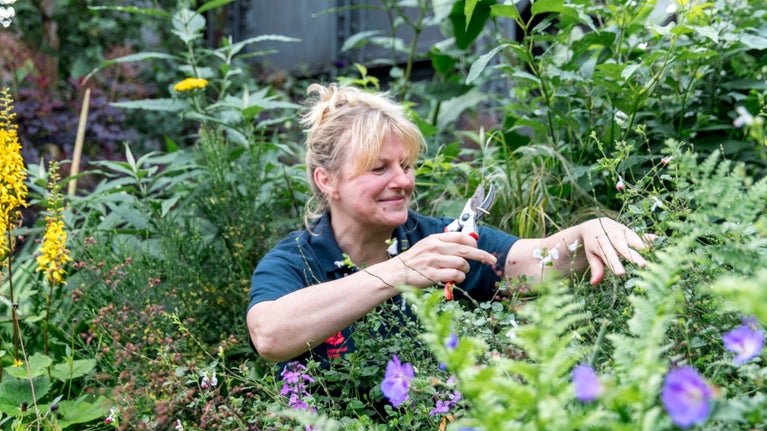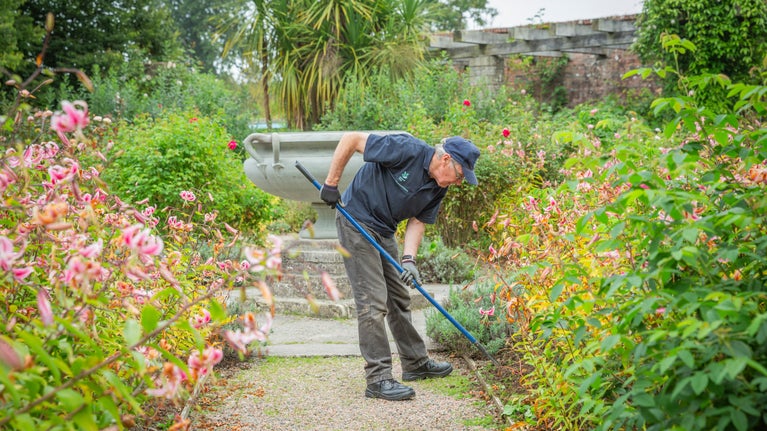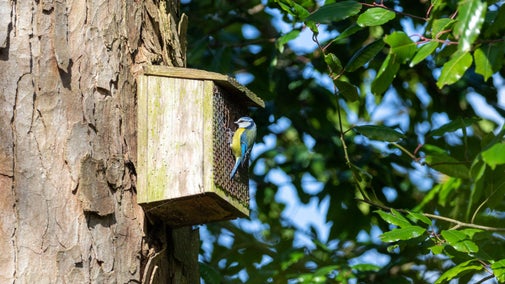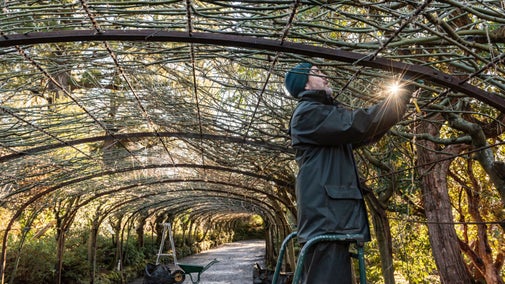
Get gardening
Our gardeners are on hand with ideas for your garden, plot or window box. From planting veg to tackling weeds, they’ve got all the important topics covered.

Autumn is a great time to make changes to your garden so that you will enjoy it even more next year. It’s time to plant spring bulbs and many other plants, mulch your borders and prepare new ground for growing. We’re also sharing top tips on pollinator-friendly flowers to plant for next year, along with how to choose plants that invigorate the senses.
Mulch is the name given to a thick, loose layer of material placed on top of bare soil in flower beds or containers.
Adding this layer helps to suppress weeds, increase water retention and improve the quality of the soil. It can also neaten the appearance of beds and protect roots from winter frost.
Popular materials used for mulching are garden compost, wood chippings, manure and leaf mould.
Apply your mulch of choice in a layer 2-3 inches thick, taking care to leave space around the woody stems of plants.
Leaving beds empty with exposed soil over winter isn't good for soil health. Mulch empty vegetable and flower beds, as above, to protect them.
Alternatively, if they're full of weeds, you could cover them with a layer of cardboard or woollen carpet and leave the weeds to break down, ready for planting in spring. If possible, avoid digging the soil as this disturbs the structure and soil organisms.
Spring bulbs can be planted in pots or in your flower borders throughout autumn. Daffodils, hyacinths and crocuses are best planted before the end of September when the soil is still warm. October and November are good times to plant your tulips.
Bulbs of tulips, crocuses and daffodils can be planted in pots or your flower borders. If you have a large area of grass try planting crocus bulbs in drifts for a vibrant colour show in early spring.
If you’re planting in pots, use a peat-free compost and really pack your bulbs in for a great display – you can even layer them up for a succession of colour.
When the leaves start to fall, and the season heads into mid to late autumn, it's a good idea to clear leaves from lawns to keep the grass healthy.
Use a rake or battery-powered leaf blower and keep the leaves to make leaf mould for feeding next year’s plants. Do this by piling leaves in wire cages and leaving them to break down.
If you’re tight on space use strong bags tied at the top and add puncture holes near the base for air to circulate. This makes a good mulch to use on your plants the following year.
If your roses had blackspot, removing fallen leaves from their base and putting them in your garden waste collection or dustbin is a good idea as the leaves can harbour this disease through winter.
If some of your perennial flowers are doing well and have formed big clumps, you can lift them now and split them into sections. You can then replant one section back in the same spot and put another elsewhere in the garden or gift it to friends.
This works best with tough, cold-tolerant perennials such as geraniums, lungwort, lady’s mantle, astrantia, and phlox.

Autumn is a great time to redesign areas of your garden and plant new shrubs and trees. Why not create a sensory garden where you can experience nature with all your senses? These plants can be planted now to invigorate your senses during future winters. Try to buy UK-grown plants that are bare-root or potted in peat-free compost.
The paperbark maple is a small- to medium-sized tree for all seasons. In the winter the copper-coloured peeling bark catches the sunlight on a crisp and clear day.
This small tree may not be a first choice for flowers, but its glossy bronze bark is a spectacular sight in winter. It can be planted during the autumn in a sunny spot and suits a variety of soil types.
If you like unusual plants then look out for these three late-winter beauties. Wintersweet, daphne and Stachyurus can be planted in autumn and will flower during the winter.
This popular winter-flowering shrub can be planted during the autumn. Put it in a sunny place and watch its fragrant pink flowers cover the stems from November to March.
This small evergreen shrub can be planted during the autumn if the soil isn't frozen and will produce sweet-smelling white blooms during the winter. Plant it in moist but well-drained soil close to a path for best results.

Plan ahead for next autumn with our top picks for pollinator-friendly flowers that bees and butterflies will love this time of year.
Many are sold in containers throughout the year at garden centres and can be planted at any time, so long as the soil isn’t frozen or waterlogged.
When buying potted plants, remember to look out for those grown in the UK using peat-free compost. You may need to ask the nursery or garden centre about this.
Bright yellow petals surround a black centre in these colourful blooms that flower freely in full sun. Leave the seed heads on over winter to provide food for birds and shelter for insects.
These daisy-like flowers are easy to grow, flourishing in sunny borders – though some varieties can cope with a partially shaded spot.
These white or pink showy flowers enjoy a partially shaded spot, making them ideal for planting underneath trees. Once they're settled, they'll spread readily to form larger clumps.
If you have a shady garden, then autumn-flowering cyclamen will add a welcome splash of colour to it. Best planted in autumn, they're easy to grow when kept out of direct sunlight.

Our gardeners are on hand with ideas for your garden, plot or window box. From planting veg to tackling weeds, they’ve got all the important topics covered.
Discover top tips on getting the most from your allotment or patch, and find out why growing your own fruit and vegetables is good for you in more ways than one.

Looking for new ways to help your local wildlife? Here are some of our top tips on how to make your garden a haven for animals, birds and insects.

Keep your garden or green spaces thriving with our winter gardening tips. There are plenty of jobs to keep you busy, from protecting your plants and wildlife and planting for winter colour to planning ahead for warmer days.

We've committed to going peat free as an organisation, and all the plants we grow, buy and sell are potted in peat-free compost. Hear from our team of gardening experts and discover top tips for peat-free gardening in your green space.
